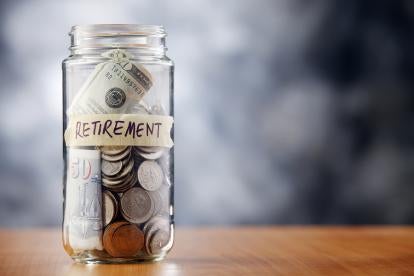On November 16, the US Department of Labor (DOL) announced both a notice of proposed rulemaking and an interpretative bulletin aimed at providing more clarity to states attempting to solve (in the words of Secretary of Labor Thomas Perez) “a potential financial crisis [and] a critical economic issue for the nation.” The crisis, as reflected in a Government Accountability Office (GAO) report from September of this year, is that about half of private sector workers in the United States don’t have access to a retirement plan at work. As Perez noted in a DOL blog post in July, only a tiny fraction of this group will use an Individual Retirement Plan (IRA) when a workplace retirement plan is not available.
According to the Georgetown University Center for Retirement Initiatives, several years ago, states began to recognize and respond to this retirement planning crisis by considering (and in some cases implementing) proposals for state-sponsored retirement plans. These initiatives are designed to reach at least some portion of private sector workers who are not participating in a retirement plan. However, ERISA (the federal pension plan law) looms in the background, which could threaten to preempt (i.e., invalidate) many of the state solutions. And so, the DOL—at the urging of President Obama—was charged earlier this year with developing regulatory support for states to continue their experimentation with state-sponsored retirement plan initiatives.
In response, the DOL’s proposed rule creates a new ERISA “safe harbor” for state-sponsored IRAs. That is, the proposed rule sets forth certain parameters under which states may sponsor IRAs without the DOL considering the programs to be employee pension benefit plans under ERISA. While the DOL has not promised that its proposed rule will ward off all claims of ERISA preemption, the intent is to build a case for deference in favor of the DOL’s rules should the principles be tested in the courts.
The safe harbor, among other features, would permit workplace access and automatic enrollment in state-sponsored IRAs, thereby overcoming what the GAO suggests are two major obstacles to getting workers to start saving for retirement. The GAO’s September report states that combining automatic enrollment features with financial incentives has helped increase worker participation in other countries and automatic enrollment is a fundamental component of several state initiatives. The US Treasury and the DOL have supported automatic enrollment for ERISA plans in the private sector for at least a decade, and it has become popular wisdom in the retirement plan community that inertia will keep automatically enrolled employees saving and promote policy goals to close the retirement savings gap.
As contrasted with ERISA plans, in order for state-sponsored IRAs to receive the safe harbor benefits of the proposed rules, they cannot allow for employer-matching or profit-sharing contributions, and employer participation in general is strictly limited. The proposed rules add other requirements and conditions as well, including that a state must ensure the “security” of its state-sponsored program, which has raised questions (and will likely give rise to comments) from state programs and providers seeking clarification or revisions.
The deadline for comments on the proposed rules is January 19, 2016.



 />i
/>i

